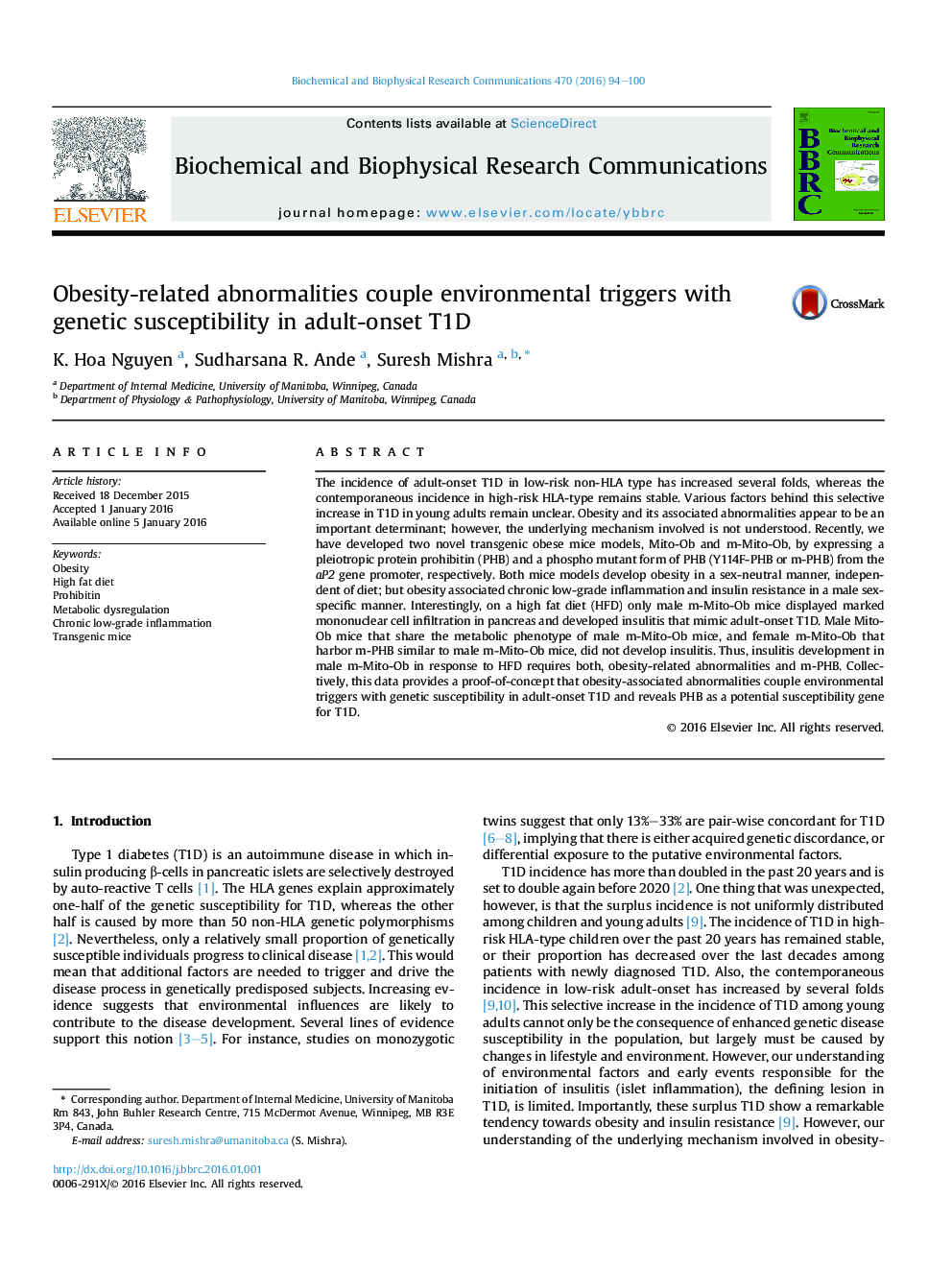| Article ID | Journal | Published Year | Pages | File Type |
|---|---|---|---|---|
| 10749350 | Biochemical and Biophysical Research Communications | 2016 | 7 Pages |
Abstract
The incidence of adult-onset T1D in low-risk non-HLA type has increased several folds, whereas the contemporaneous incidence in high-risk HLA-type remains stable. Various factors behind this selective increase in T1D in young adults remain unclear. Obesity and its associated abnormalities appear to be an important determinant; however, the underlying mechanism involved is not understood. Recently, we have developed two novel transgenic obese mice models, Mito-Ob and m-Mito-Ob, by expressing a pleiotropic protein prohibitin (PHB) and a phospho mutant form of PHB (Y114F-PHB or m-PHB) from the aP2 gene promoter, respectively. Both mice models develop obesity in a sex-neutral manner, independent of diet; but obesity associated chronic low-grade inflammation and insulin resistance in a male sex-specific manner. Interestingly, on a high fat diet (HFD) only male m-Mito-Ob mice displayed marked mononuclear cell infiltration in pancreas and developed insulitis that mimic adult-onset T1D. Male Mito-Ob mice that share the metabolic phenotype of male m-Mito-Ob mice, and female m-Mito-Ob that harbor m-PHB similar to male m-Mito-Ob mice, did not develop insulitis. Thus, insulitis development in male m-Mito-Ob in response to HFD requires both, obesity-related abnormalities and m-PHB. Collectively, this data provides a proof-of-concept that obesity-associated abnormalities couple environmental triggers with genetic susceptibility in adult-onset T1D and reveals PHB as a potential susceptibility gene for T1D.
Keywords
Related Topics
Life Sciences
Biochemistry, Genetics and Molecular Biology
Biochemistry
Authors
K. Hoa Nguyen, Sudharsana R. Ande, Suresh Mishra,
